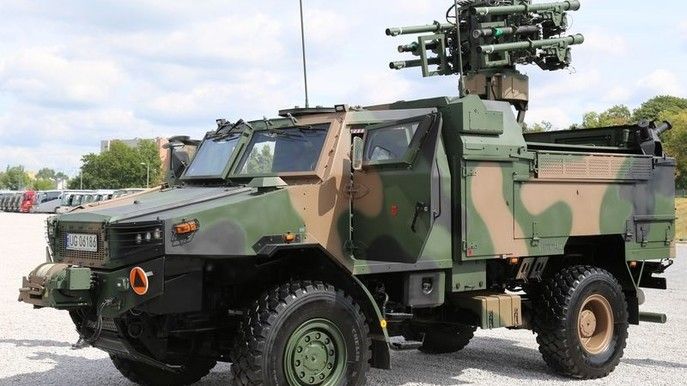Poprad SHORAD Delivered to the Polish Army

The Polish military has already received the first series manufactured examples of the Poprad anti-aircraft systems. The platform in question has been received by both the training units, as well as the land forces air defence squadrons.
The Polish military is now taking delivery of the Poprad anti-aircraft systems. Brig. Genral Stefan Mordacz, Head of the Air/Missile Defence Management and Deputy Inspector for the Branches of the Military at the General Command, told us that implementation of the agreement concerning the self-propelled Poprad SAM systems is proceeding forward in an uninterrupted manner. Mordacz added that delivery of the equipment and training are being implemented in line with the schedule. “The first systems have been received by the air defence units of the land forces and educational elements [units that provide training]” - General Mordacz stressed.
The Agreement concerning the acquisition of the self-propelled Poprad anti-aircraft systems was signed back in December 2015, by and between the Armament Inspectorate and the manufacturer of the systems - the PIT-RADWAR company. Value of the agreement has been set at the level of PLN 1.083 billion. It includes delivery of 77 new anti-aircraft systems and customization of 2 systems of the trial batch.
It has been assumed that the anti-aircraft systems would be delivered between 2018 and 2021, and the deliveries are proceeding in line with the schedule. Back in June, head of the MoD, Mariusz Błaszczak, noted that 36 Poprad systems would be received by the military by the end of 2019.
The first units equipped with Poprads have already reached the initial combat readiness status, however, further training is required to obtain full capability. The systems need to be integrated with other elements of the battlespace. General Stefan Mordacz noted: “Considering the fact that the crew training is conducted at a basic level during the handing off of these systems for use in the units, and assuming that we are in possession of required quantity of missiles, we may say that the first elements that received the POPRAD systems have already attained initial combat readiness. However, one should note that FOC status would be achieved in line with the training programmes, once the whole reconnaissance, strike and command systems are integrated, following the squadron-level training stage.”
Poprad self-propelled anti-aircraft system is armed with four Grom/Piorun launchers and it has been fitted with an optronic sensor with thermal imaging and TV cameras. It also features an IFF module. The system is tailored to be used in an integrated air-defence system but it may also be operated in an autonomous manner. It has been based on the AMZ Żubr 4×4 platform, similarly to the Soła and Bystra radars that could potentially be operated alongside the Poprads.
Poprad system is to act against targets at altitudes of up to 3.5 kilometres and distances of up to 5.5 kilometres. The envelope is going to be slightly expanded, once the Piorun missiles are delivered. The system may act against aircraft, helicopters, cruise missiles and UASs. The information available suggests that Poprads would be received by anti-aircraft regiments of the squadrons of the Land Forces, and by anti-aircraft squadrons of selected brigades of the Polish military, primarily ones operating t
he Rosomak APC.
Along with Poprads the military would also receive a modern anti-aircraft system that would be destined, primarily, to act against low flying targets. The system, however, also offers a certain modernization potential. The Polish defence industry (including, above all, the CRW Telesystem-MESKO company working together with MESKO S.A.) has presented a concept of a new anti-aircraft missile with a range of 10 to 12 kilometres that could constitute armament of the Poprad systems and other systems destined to protect mobile units of the land forces. The missile would be developed on the basis of the experiences gathered during the Piorun programme, especially when it comes to the guidance system of the effector.
Czytaj też: Future of the Polish Radar Technologies [REPORT]
PIT-RADWAR has also developed elements of the SHORAD system that would, alongside the Poprad system, be based on Grom MANPADS and A-35/AG-35 cannons (NATO 35 mm round). The command and control elements of this system based, for instance, on the WG-35 command vehicle, could be possibly utilized in the Narew SHORAD programme that is to be pursued by the domestic defence industry. The concept of a staged approach towards the Narew system, involving use of the Bystra radar and WG-35 elements throughout the first phase of the programme has been presented by the Polish industry in late 2017.
